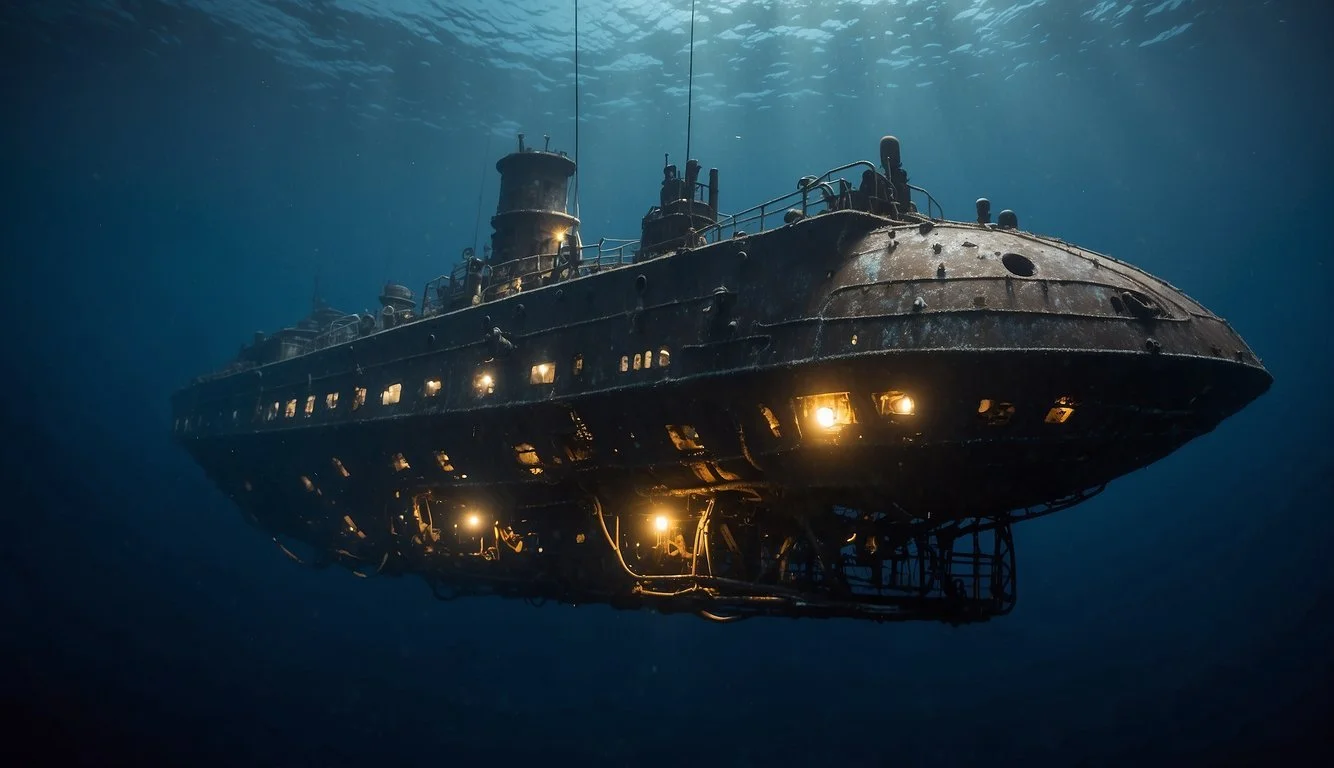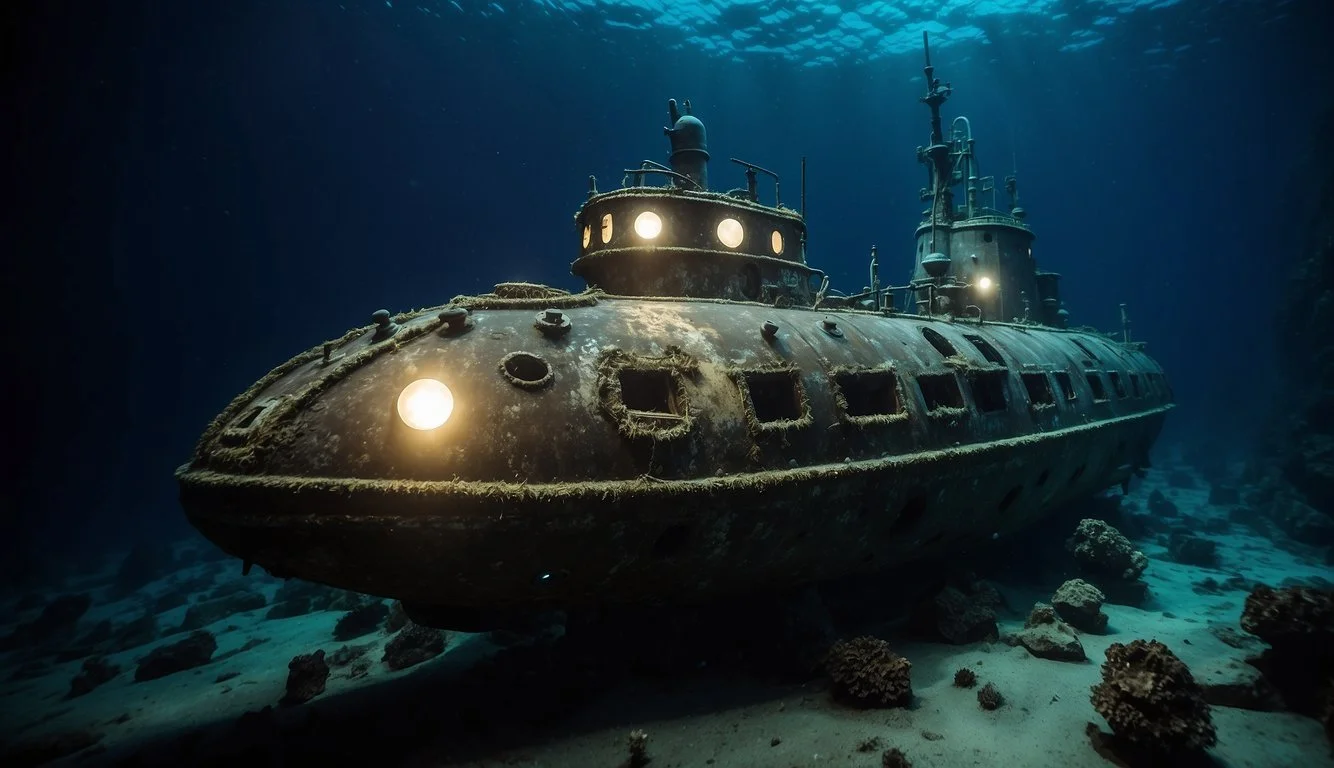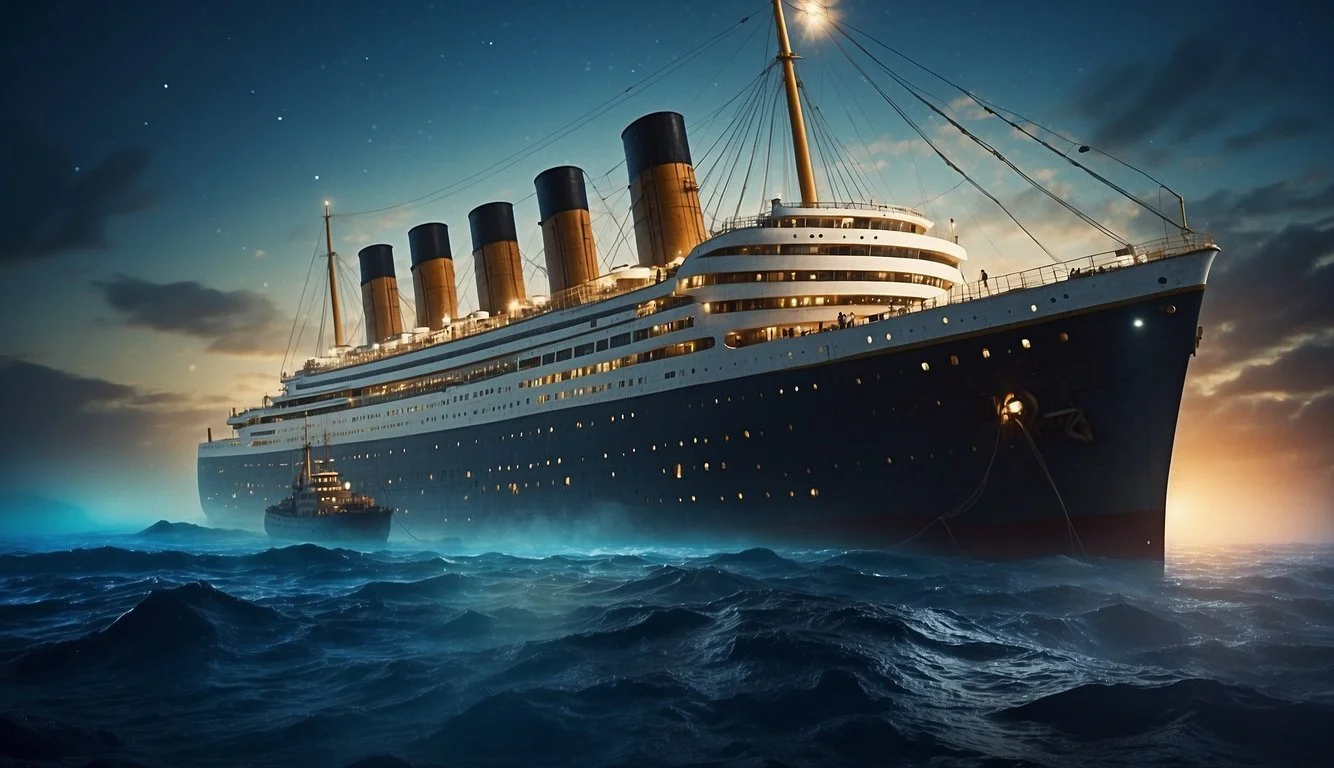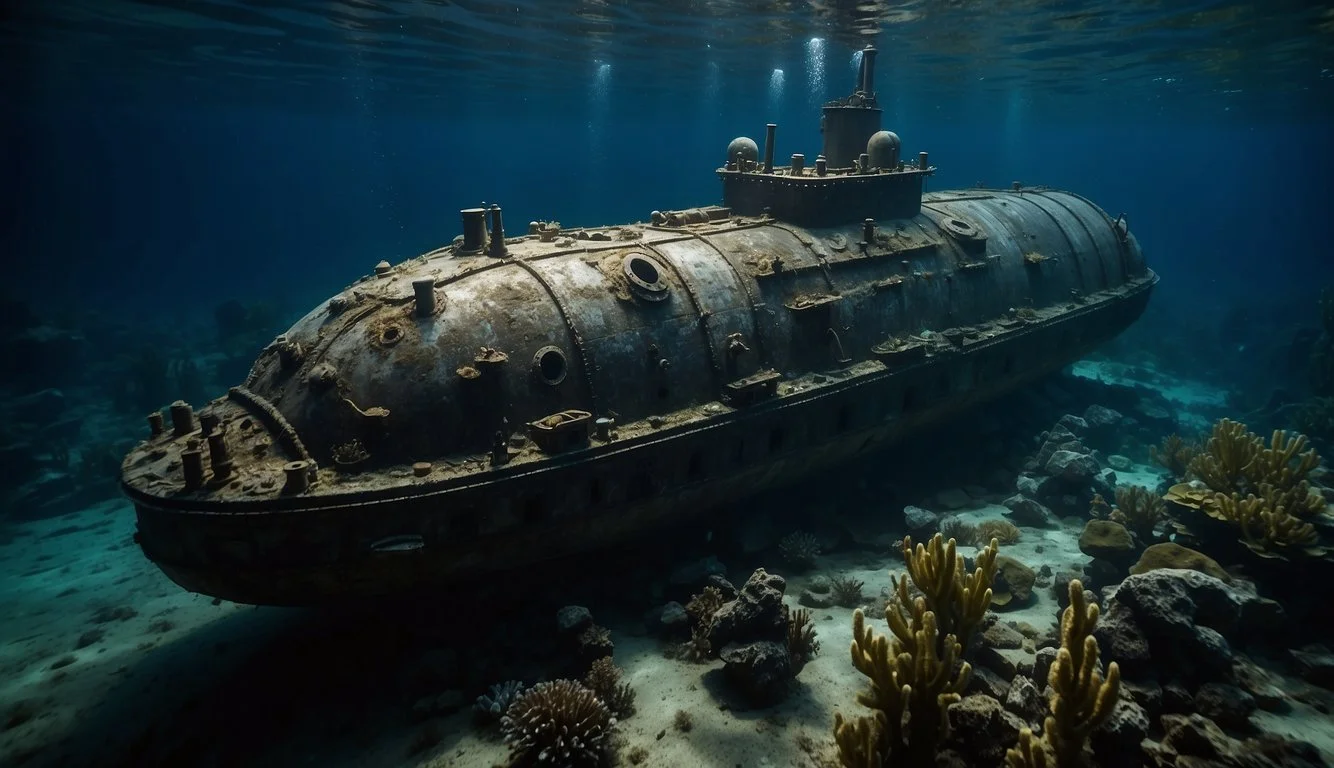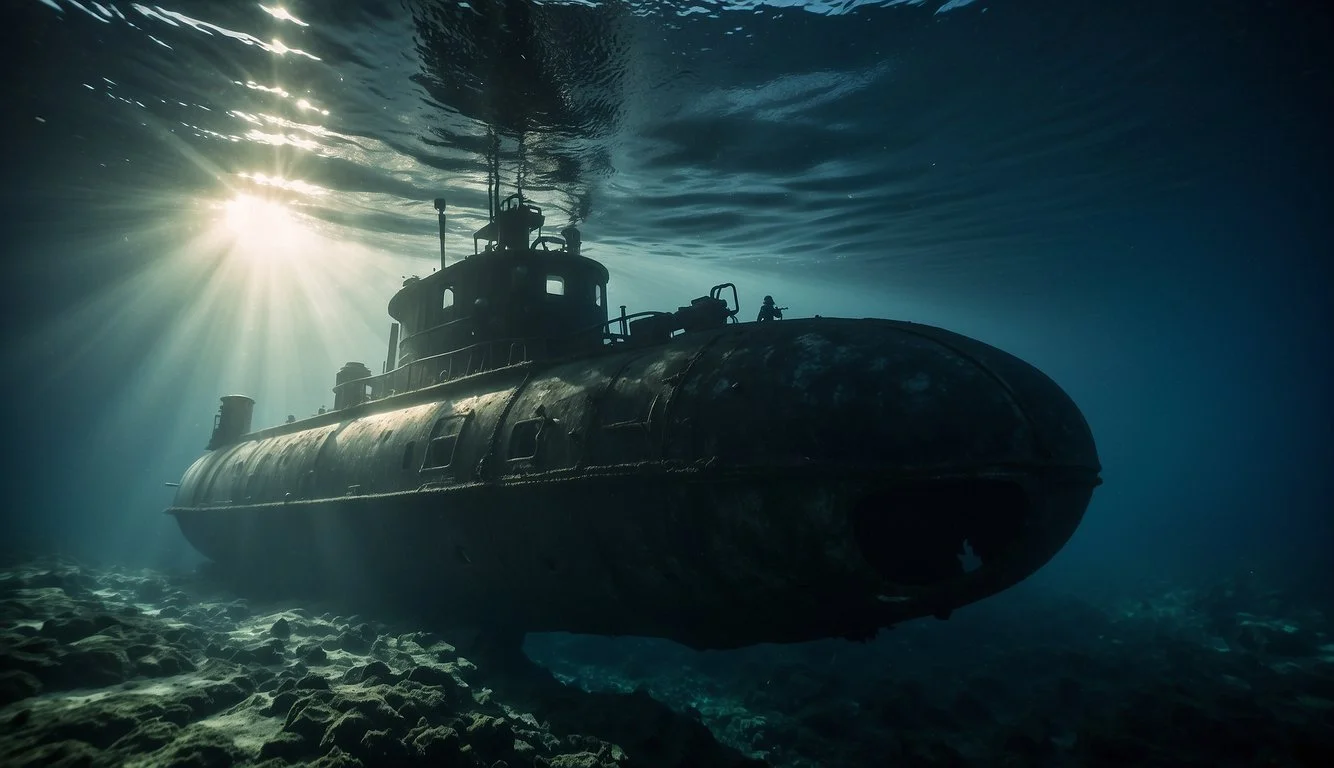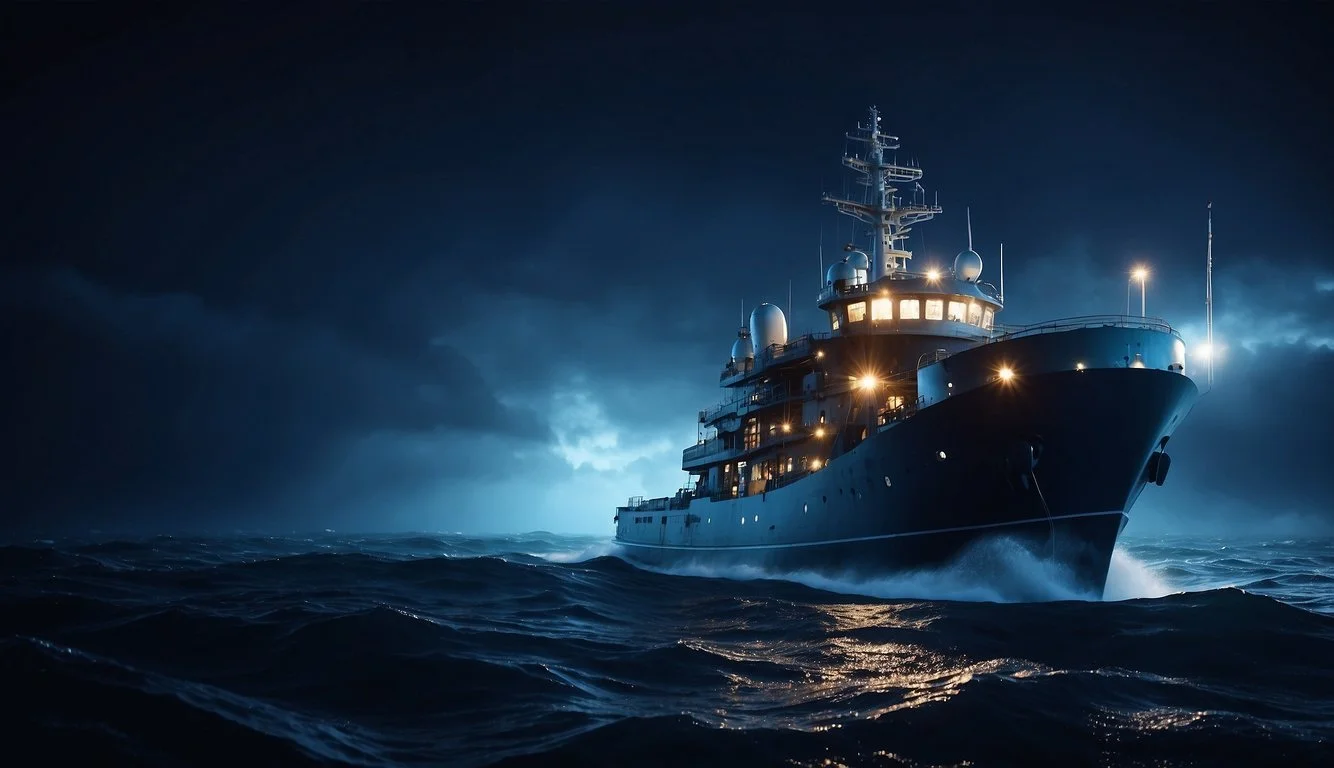Documentary Review: Ghosts of the Abyss (2023)
Exploration of Titanic's Depths
James Cameron's "Ghosts of the Abyss" offers a fascinating peek into the depths of the ocean, revisiting the historic remains of the Titanic. The documentary, enhanced by the use of cutting-edge technology, captures incredible interior shots of the iconic shipwreck, providing an unprecedented close-up experience. Bill Paxton's on-screen presence, coupled with the technological marvels employed, creates a unique blend of exploration and storytelling.
Despite some critiques regarding its pacing and emotional impact, "Ghosts of the Abyss" remains a visually stunning piece that takes viewers on an intriguing underwater journey. The collaboration between Disney and Walden Media brings a polished and comprehensive look at the Titanic, juxtaposed with Paxton's expressions that add a touch of humor. Cameron's deep-sea adventure highlights both the technological achievements and the poignant history of the Titanic.
Though the documentary faced mixed reviews, its thrilling sequences and the immersive IMAX format contribute to an overall compelling viewing experience. Whether you're a history buff or a fan of Cameron's works, "Ghosts of the Abyss" provides a cinematic exploration worth diving into.
Background on 'Ghosts of the Abyss'
"Ghosts of the Abyss" is a 3-D documentary that explores James Cameron's expeditions to the Titanic wreck, narrated by actor Bill Paxton. It's known for its in-depth footage and technologically advanced filming techniques.
Concept and Development
James Cameron conceived "Ghosts of the Abyss" after his blockbuster success with "Titanic." Fascinated by the shipwreck, he embarked on a series of deep-sea expeditions. The documentary aimed to provide an unprecedented look at the Titanic's resting place through innovative 3-D technology. His objective was to capture the haunting, yet historical significance of the shipwreck.
For this project, Cameron utilized advanced submersibles and cameras. These tools allowed them to reach depths of 12,500 feet. The documentary includes detailed scans and footage, vividly bringing the Titanic's underwater remains to light.
Director and Production Team
James Cameron, an Oscar-winning director, led the project. He collaborated with experts in marine archaeology and oceanography. This partnership ensured the accurate portrayal of the Titanic's remains and context. Cameron's previous experience with underwater shoots played a crucial role in the documentary's success.
The production team included engineers and 3-D technology pioneers. They employed state-of-the-art equipment to overcome the challenges of filming in such harsh conditions. The result was a visually stunning and scientifically valuable documentary.
Casting and Narration
Bill Paxton, a long-time collaborator with Cameron, served as the film's narrator. His role was pivotal as he provided a relatable voice, sharing personal reflections during the expedition. Paxton’s narration added an emotional layer to the documentary, connecting the audience to the story of the Titanic.
The cast and crew also included marine experts and historians. Their insights helped frame the narrative, making it both educational and engaging. Paxton's presence in the submersible with Cameron brought a unique, viewer-friendly perspective to the deep-sea explorations.
Technical Aspects
"Ghosts of the Abyss" leverages cutting-edge technology to offer an immersive experience. Advanced cinematography, innovative underwater filming techniques, impressive special effects, and a compelling sound design contribute significantly to the film's impact.
Cinematography
The cinematography in "Ghosts of the Abyss" stands out for its intricate detailing and the ability to capture the haunting beauty of the Titanic wreck. Utilizing IMAX cameras, director James Cameron ensures high-resolution footage that brings the underwater scenes to life. The wide shots of the vast, sunken ship juxtaposed with close-ups of intricate details create a powerful visual narrative that places viewers right in the depths of the ocean.
Underwater Filming Techniques
Cameron employs state-of-the-art submersibles to navigate the wreck, ensuring stable and clear footage at extreme depths. These submersibles are equipped with advanced lighting systems to illuminate the dark depths of the Atlantic Ocean. The use of remotely operated vehicles (ROVs) allows for exploration in tight spaces within the wreck, capturing images and sequences that human divers could not. This technology brings a unique perspective that enhances the documentary's authenticity.
Special Effects and CGI
The film integrates special effects and CGI to reconstruct the Titanic's past grandeur. These visual enhancements are seamlessly blended with real footage to offer a vivid contrast between the ship's current decayed state and its once-majestic form. The digital recreations are meticulously crafted, ensuring historical accuracy and visual realism, which helps viewers connect the fragmented remains with their original context.
Sound Design and Score
Sound design in "Ghosts of the Abyss" plays a crucial role in building atmosphere. The ambient sounds of the underwater environment, combined with a haunting score, enhance the film's emotional impact. Composer Joel McNeely's music provides an ethereal backdrop that underscores both the mystery and tragedy of the Titanic. The careful layering of sound effects, from the creaking hull to the bubbling water, adds depth to the viewing experience, making the immersive narrative even more compelling.
Themes and Messages
"Ghosts of the Abyss" (2023) intertwines historical relevance with human experiences, offering viewers deep insights into the Titanic's wreckage and personal reflections from those involved in the expedition.
Historical Significance
James Cameron's documentary investigates the Titanic's ruins, revealing the detailed preservation of artifacts. The film presents a technological exploration by utilizing advanced submersibles and 3D imaging.
These elements allow viewers to see the ship's current state, effectively communicating the passage of time and the monumental impact of the 1912 disaster. The documentary's visuals highlight specific parts of the wreckage, such as the grand staircase and preserved personal items, underscoring the Titanic's enduring legacy.
Human Stories and Interviews
Interviews with crew members, historians, and scientists provide personal insights into the venture. Bill Paxton's narration and on-camera experiences add a relatable human element.
The documentary includes dialogues that reveal the emotional weight of exploring a site of tragedy. These interviews and personal stories bring forth a spectrum of emotions and illustrate the dedication required for such an ambitious project. By portraying the human side of the exploration, the film offers both intimate and collective reflections on the Titanic.
Critical Analysis
"Ghosts of the Abyss" (2023) by James Cameron offers an immersive look at the Titanic through a blend of narrative structure, pacing, viewer reception, and expert reviews. These elements collectively shape the documentary's distinct experience.
Narrative Structure
Utilizing a combination of live-action footage, animated maps, and photographs, "Ghosts of the Abyss" aims to guide viewers through the Titanic wreckage. Bill Paxton's narration serves as a focal point, providing both information and emotional context. The documentary juxtaposes historical re-creations with present-day explorations, effectively contrasting past and present. This technique enhances the storytelling, making the ship's tragic history more tangible and engaging.
Pacing and Engagement
The pacing of "Ghosts of the Abyss" has drawn mixed feedback. Some find the documentary a bit slow and lacking emotional depth. Despite this, certain moments manage to capture the audience's attention, thanks to Paxton's expressive narration and the visually stunning underwater footage. Highlights include captivating shots of the wreck and meticulous attention to detail, which keep the viewer invested.
Viewer Reception
Audience reception has varied; some viewers appreciate the immersive experience and the innovative use of technology, while others criticize the film for its slow momentum. The visualization techniques, such as 3D IMAX filming, provide a unique viewing experience, but not all viewers find it compelling. Despite uneven engagement levels, the film's historical insights and visuals leave a lasting impression.
Expert Reviews
Critics from notable publications have shared a range of opinions. Slant Magazine criticizes the documentary as a tedious endeavor, while MovieWeb praises its creative orientation methods. Roger Ebert highlights the evocative portrayal of the Titanic's ghostly remains. Rolling Stone acknowledges narrative flaws but commends the film's thrilling aspects. These expert reviews reflect both the strengths and areas of improvement.
Overall, "Ghosts of the Abyss" stands out for its detailed exploration and innovative presentation, even if it occasionally falters in pacing and emotional connection.
Cultural and Educational Impact
"Ghosts of the Abyss" provides a comprehensive exploration of the Titanic's wreckage, which has captured public imagination for decades. James Cameron's willingness to dive 12,000 feet below the sea demonstrates a dedication to uncovering historical truths.
This documentary serves as an educational tool, offering viewers a unique look into marine archaeology and deep-sea exploration. The detailed footage of the Titanic's remains helps educational institutions teach history and oceanography more vividly.
Bill Paxton's involvement adds a relatable aspect to the film. His nervousness and curiosity mirror the audience's emotions, making the experience more engaging and accessible. By featuring a familiar face, the documentary also draws in viewers who might not typically watch educational films.
The use of IMAX technology offers an immersive viewing experience. This aids in capturing the sheer scale and hidden details of the Titanic, which can leave a lasting impression on audiences. The visual clarity helps in better understanding the ship's construction and the events that led to its sinking.
Moreover, the documentary emphasizes the importance of preserving historical sites. By documenting the current state of the Titanic, "Ghosts of the Abyss" serves as a reminder of the need for conservation efforts in preserving underwater heritage sites for future generations.
Key Takeaways:
In-depth look at Titanic's wreckage
Educational tool for history and oceanography
Relatable through Bill Paxton's involvement
Immersive IMAX experience enhances learning
Promotes historical preservation and conservation efforts
Comparison With Other Documentary Films
"Ghosts of the Abyss" stands out among other documentaries due to its pioneering use of 3-D technology and deep-sea exploration. Directed by James Cameron, it offers an intimate look at the Titanic wreck.
Few documentaries provide such personal engagement with historical artifacts. For instance:
"Deep Sea" (2006) showcases marine life, but lacks the personal connection with historical events.
"Blue Planet II" (2017) offers stunning visuals of underwater ecosystems, yet does not focus on a single historical narrative.
The involvement of actor Bill Paxton adds an emotional layer, similar to how Werner Herzog engages audiences through his narration in "Grizzly Man" (2005).
While "Ghosts of the Abyss" employs advanced technology for exploration, “March of the Penguins” (2005) uses conventional footage, emphasizing storytelling and natural beauty.
Documentary Focus Key Feature Ghosts of the Abyss Titanic wreck 3-D technology, emotional engagement Deep Sea Marine life Stunning visuals, James Cameron’s narration Blue Planet II Underwater ecosystems High-quality footage, diverse subjects Grizzly Man Human-animal interaction Emotional connection via narration March of the Penguins Emperor penguins Conventional footage, strong narrative
Despite different focuses, each documentary aims to immerse viewers in unique environments, using distinct techniques to capture attention. The fusion of technology and storytelling in "Ghosts of the Abyss" sets a new standard for future documentary filmmaking.
Personal Reflections on the Film
James Cameron's documentary, Ghosts of the Abyss, offers a unique and immersive look at the wreck of the Titanic.
In this film, the 3-D technology stands out as a highlight. It brings a sense of depth and reality to the underwater scenes. Viewers can almost feel as though they are diving alongside Cameron and his team.
Bill Paxton's narration adds a personal touch to the documentary. His involvement goes beyond just a voiceover; he also joins the expedition, offering insights and reactions that enhance the viewing experience.
The footage of the Titanic itself is both haunting and mesmerizing. The decaying remains of the ship contrast starkly with its former glory. These visuals create a powerful reminder of the tragedy that occurred over a century ago.
Watching the crew navigate the challenges of deep-sea exploration is fascinating. Their persistence in capturing detailed images of the wreck shows the dedication involved in such a project.
The film also benefits from James Cameron's directorial expertise. His experience with both fictional and documentary storytelling ensures the narrative remains engaging throughout.
In summary, Ghosts of the Abyss successfully blends technology, personal storytelling, and historical exploration. It offers a compelling look at one of the most famous shipwrecks in history. This documentary is an impressive achievement in undersea filmmaking.
Conclusion and Thoughts on Legacy
James Cameron's Ghosts of the Abyss combines cutting-edge technology with historical exploration, offering a vivid look at the Titanic's resting place. The documentary, narrated by Bill Paxton, sheds light on the shipwreck's haunting beauty and the profound human stories tied to it.
The use of 3D technology adds depth to the visuals, making the underwater scenes more immersive. Cameron's expertise in filmmaking and deep-sea exploration ensures a compelling and authentic experience.
The legacy of Ghosts of the Abyss lies in its ability to connect past and present. By documenting the Titanic's remnants, it honors those who perished while educating new generations. The film stands as a testament to human curiosity and the relentless pursuit of knowledge.
Ghosts of the Abyss remains a significant work in the documentary genre, combining historical reverence with modern storytelling techniques. It continues to captivate audiences and inspire both historians and filmmakers alike.
Through this film, Cameron not only achieved a technical feat but also contributed to the ongoing fascination with the Titanic. By bringing the underwater world to life, he helped preserve its legacy for future viewers.


